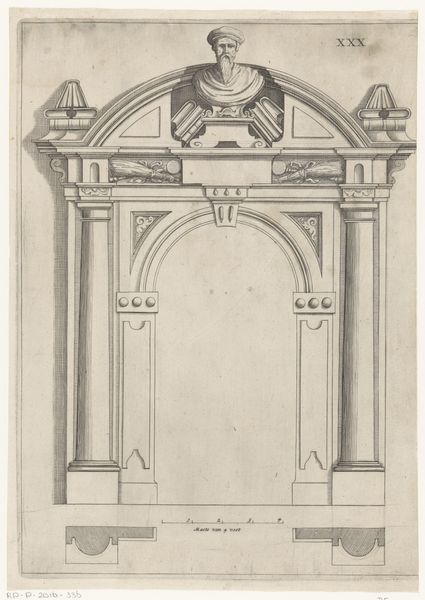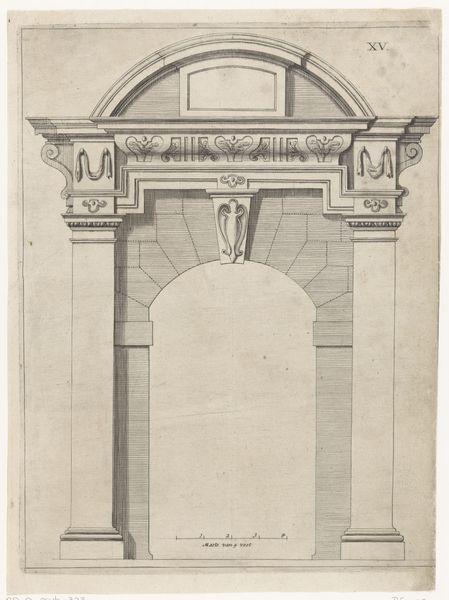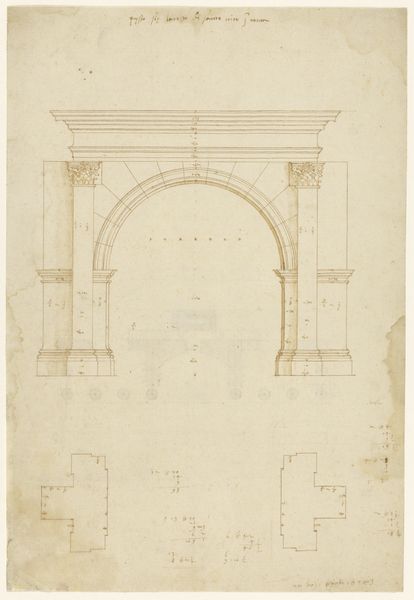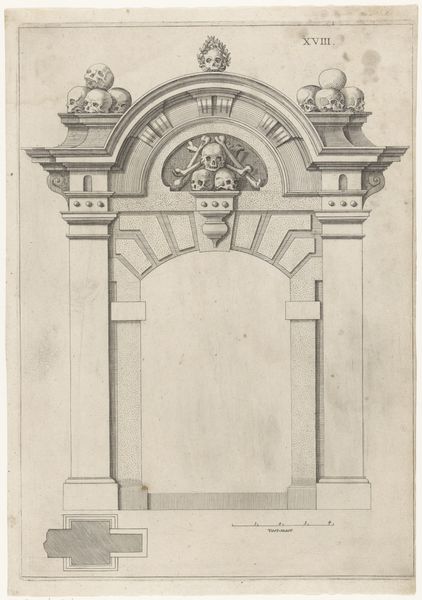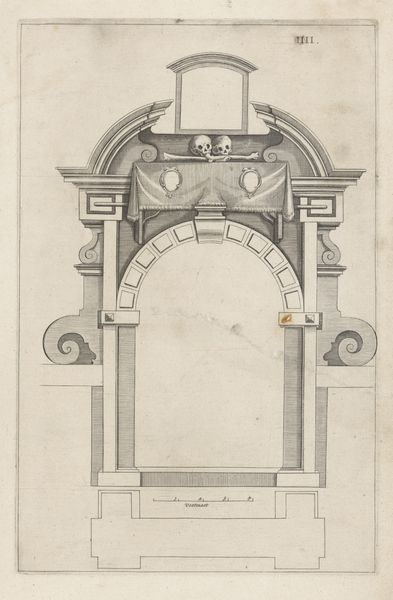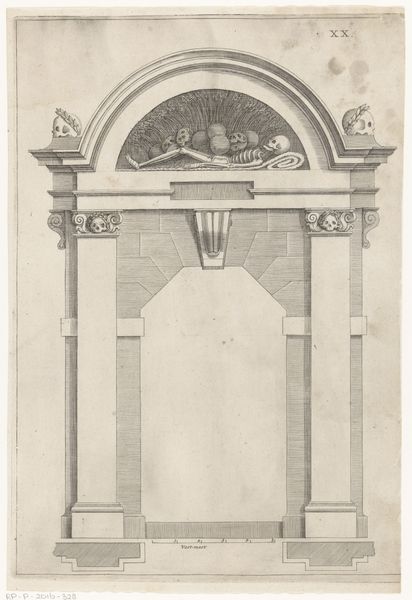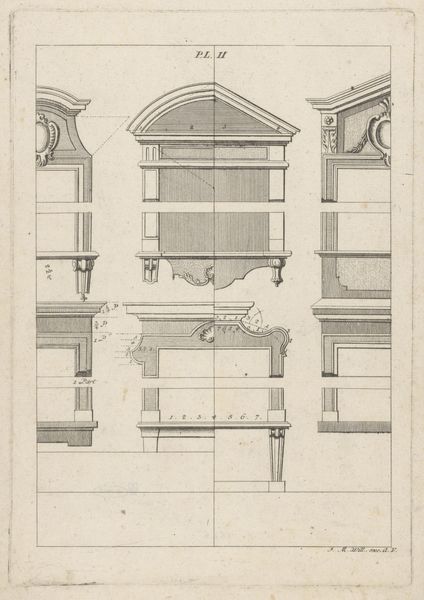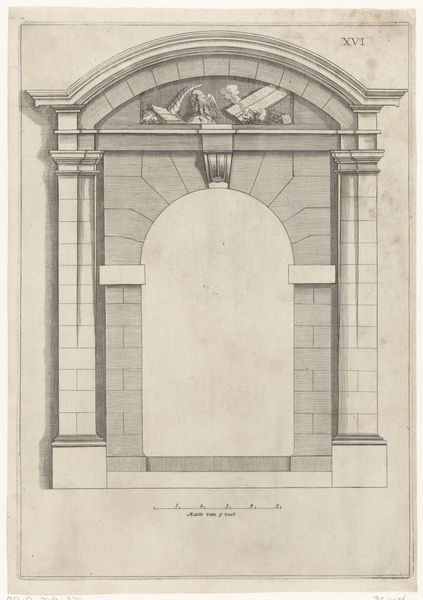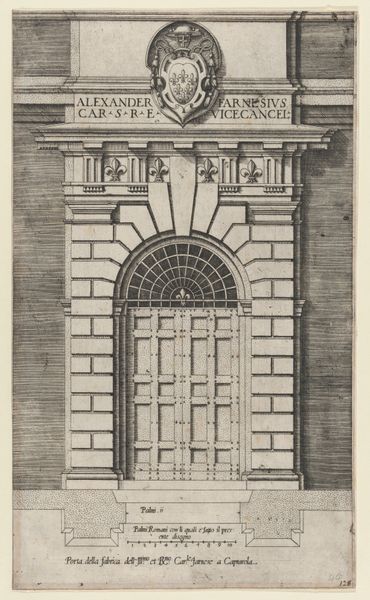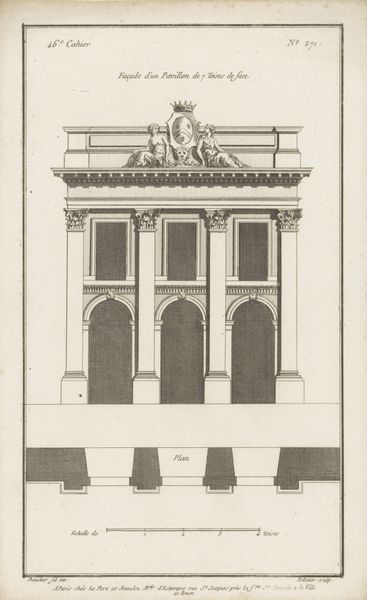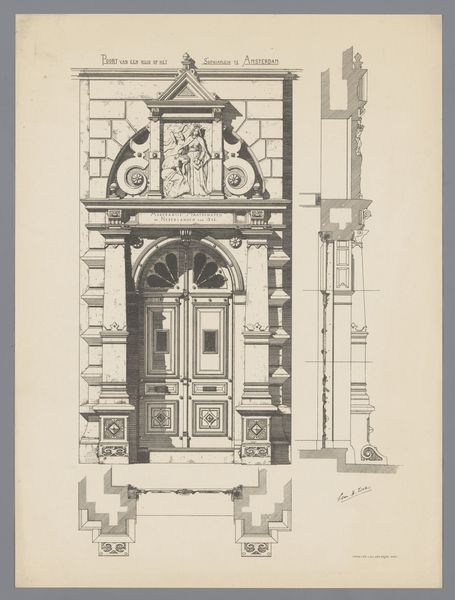
drawing, print, paper, engraving, architecture
#
drawing
#
baroque
# print
#
old engraving style
#
paper
#
form
#
geometric
#
line
#
history-painting
#
engraving
#
architecture
Dimensions: height 324 mm, width 228 mm
Copyright: Rijks Museum: Open Domain
Curator: Well, let's dive into this rather striking image: an engraving titled "Poort tot begraafplaats bij de Zuiderkerk," which translates to "Gateway to the Cemetery at the Zuiderkerk." It's dated 1631. Editor: Immediately, there’s something very austere and imposing about this. It feels like a stage set, a rather grim proscenium arch. Curator: Precisely. Its power lies, I think, in its clear and meticulous delineation of architectural forms. Notice the use of clean lines, the geometric shapes—all classic Baroque elements. Beyond just aesthetics, we need to remember what these gateways represented. The engraving, rendered on paper, offers not only architectural detail but profound societal context as well. Editor: And let's not forget the overt symbolism staring right back at us, these skulls up there. Morbid, but expected I guess, they have that “memento mori” vibe. But it goes further, doesn't it? This isn't just a portal; it's a marker of transition, reminding us that mortality is the inevitable gatekeeper. The engraver certainly captured a kind of emotional restraint alongside clear structural principles. Curator: Exactly! This piece provides us access to some very sober reflections from the Golden Age on life and death. Think about the period: constant religious and political tension. Visual markers were of utmost importance. While the architectural form is about control and structure, those skulls undermine it, acknowledging inescapable realities. What makes this simple work culturally important is that we, generations later, can immediately read that conflict. Editor: I agree completely. This architectural rendering—created by an anonymous artist and housed in the Rijksmuseum's collection today—becomes a reflection on the anxieties, faiths, and artistic values of a society grappling with profound changes. The gate might stand firm, but it’s also a stark invitation, isn’t it? Curator: Yes, the anonymous artist has given us not only architecture but also, if we choose, entry into a deeper cultural memory. Editor: An image which asks, what remains behind when we are gone. Well said.
Comments
No comments
Be the first to comment and join the conversation on the ultimate creative platform.

